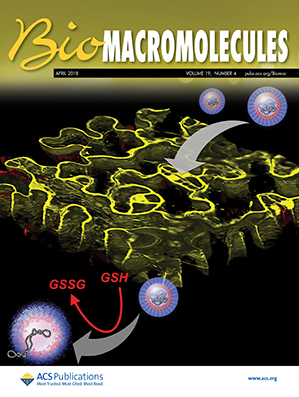用于植物细胞壁特异性染色的果胶响应聚集诱导发射探针。
IF 5.5
2区 化学
Q1 BIOCHEMISTRY & MOLECULAR BIOLOGY
引用次数: 0
摘要
植物细胞壁的高效可视化是推进植物科学发展的基础。本研究提出了一种聚集诱导发射(AIE)活性铱复合物在特定植物细胞成像中的创新应用。具有两个胺基的配合物Ir-Am对果胶(植物细胞壁的主要结构成分)表现出选择性和高效的磷光响应。机制研究证实果胶与Ir-Am的结合是通过胺-羧基相互作用介导的,而胺-羧基相互作用又固定了Ir-Am的构象,从而激活其AIE。成像实验进一步证明Ir-Am可以成功标记模式植物不同组织的植物细胞壁,与刚果红、碘化丙啶等传统染料相比,Ir-Am具有突出的染色性能。本研究不仅为植物细胞壁的可视化提供了一种有效和创新的方法,而且极大地拓宽了铱配合物作为植物研究有力工具的应用。本文章由计算机程序翻译,如有差异,请以英文原文为准。
A Pectin-Responsive Aggregation-Induced Emission Probe for Specific Staining of Plant Cell Walls
Efficient visualization of the plant cell wall is fundamental to advancing plant science. This study presents an innovative utilization of an aggregation-induced emission (AIE)-active iridium complex in specific plant cell imaging. Complex Ir-Am with two amine groups exhibited selective and efficient phosphorescence response to pectin, a major structural component of plant cell walls. Mechanism investigations confirmed that the binding between pectin and Ir-Am is mediated by amine-carboxylic interactions, which in turn fixed the conformation of Ir-Am for activating its AIE. Imaging experiments further demonstrated that Ir-Am can successfully label the plant cell wall in different tissues of the model plants and exhibit outstanding staining performance compared to conventional dyes such as Congo red and propidium iodide. This research not only presents an effective and innovative approach for visualizing the plant cell walls but also greatly broadens the applications of iridium complexes as powerful tools for botanical studies.
- Download: Download high-res image (93KB)
- Download: Download full-size image
求助全文
通过发布文献求助,成功后即可免费获取论文全文。
去求助
来源期刊

Biomacromolecules
化学-高分子科学
CiteScore
10.60
自引率
4.80%
发文量
417
审稿时长
1.6 months
期刊介绍:
Biomacromolecules is a leading forum for the dissemination of cutting-edge research at the interface of polymer science and biology. Submissions to Biomacromolecules should contain strong elements of innovation in terms of macromolecular design, synthesis and characterization, or in the application of polymer materials to biology and medicine.
Topics covered by Biomacromolecules include, but are not exclusively limited to: sustainable polymers, polymers based on natural and renewable resources, degradable polymers, polymer conjugates, polymeric drugs, polymers in biocatalysis, biomacromolecular assembly, biomimetic polymers, polymer-biomineral hybrids, biomimetic-polymer processing, polymer recycling, bioactive polymer surfaces, original polymer design for biomedical applications such as immunotherapy, drug delivery, gene delivery, antimicrobial applications, diagnostic imaging and biosensing, polymers in tissue engineering and regenerative medicine, polymeric scaffolds and hydrogels for cell culture and delivery.
 求助内容:
求助内容: 应助结果提醒方式:
应助结果提醒方式:


